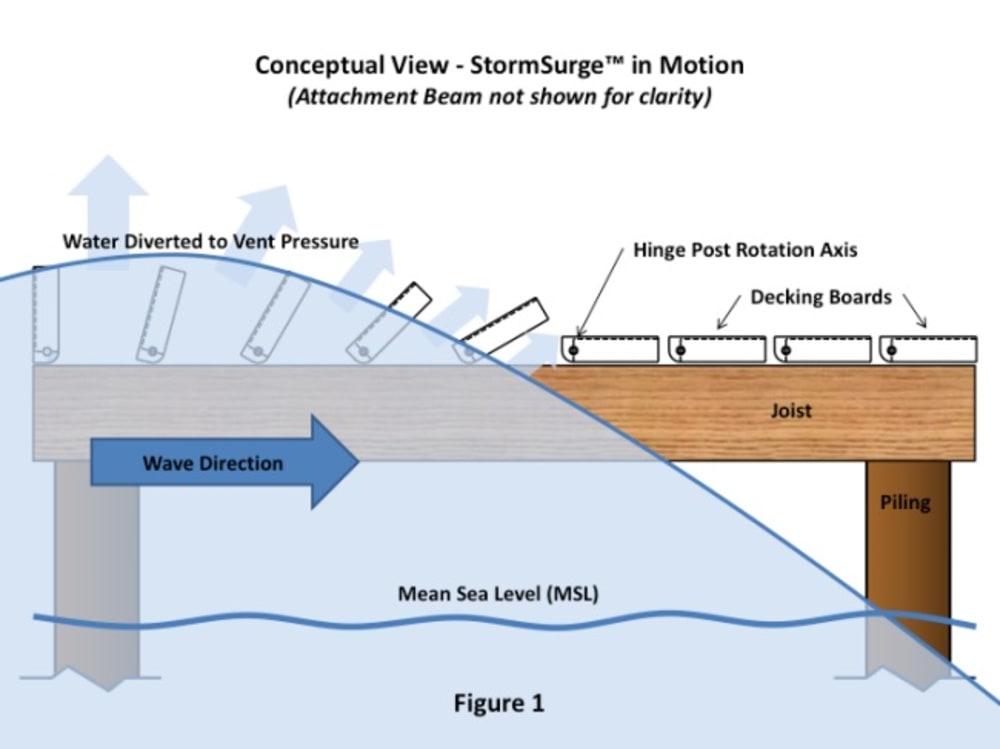Problem: Storm surges on oceans, bays, rivers, and even lakes damage or destroy millions of dollars’ worth of waterside dock and deck properties each year. As storm waters rise and wave action intensifies, extreme pressures can be placed on the underneath side of stationary waterside structures such as fixed docks, decks, piers, wharfs, and slips constructed on pilings. Because damage is commonplace and repairs to missing deck boards, broken joists, split support beams, and uplifted pilings can be expensive, these waterside structures can often be difficult to insure.
Solution: The StormSurge™ Decking system provides a much-needed solution to dramatically increase storm resistance through a simple pressure relief concept that allows normal decking boards to function as a system of dynamic louvers when over-pressurized from beneath (Figure 1). This allows for the traditional look of stationary piling construction that you can’t get with floating docks and gridded deck designs.
Installation (Figure 2): Comprised of an affordable, easy to install hinge and beam system, StormSurge™ can be incorporated into most conventional dock designs and can be completed as a Do-It-Yourself project. StormSurge™ hinges (Figure 3) are self-locating and are attached with screws to both ends of each decking board. Manufactured in several standard sizes, they can be used with many popular construction materials including pressure-treated lumber, composite, PVC, and plastic decking. A specially designed beam is attached to the outer joist by means of a predrilled hole pattern that ensures parallel alignment and proper spacing for the decking boards. The decking boards are then installed by inserting the StormSurge™ hinge posts into the pivot holes of the beam along one side of the deck with the pivot end (or leading edge of the deck board) positioned to face incoming waves. Next, the decking boards are locked into the correct orientation by inserting the free hinge post ends into the pivot holes of a second beam which is attached to the opposite outer joist. Once both beams are attached to the deck's outer support structures, the installation is complete!
Operation: Under normal weather conditions, the decking boards lie flat to form the walking surface of a traditional dock. But when storm surge conditions exist, the decking boards are free to rotate upward about their hinge posts when lifted by wave-generated water pressure beneath. This dynamic venting means the effects of water pressure are reduced since water is vented between the deck boards and diverted up and over the deck instead of transferring forces throughout an otherwise rigid structure.
The StormSurge™ Decking system is a worthwhile investment for new construction or as a conversion for existing structures that will help waterfront owners weather the storms!
Like this entry?
-
About the Entrant
- Name:Gary Williams
- Type of entry:individual
- Software used for this entry:MS Excel and MS PowerPoint
- Patent status:none








